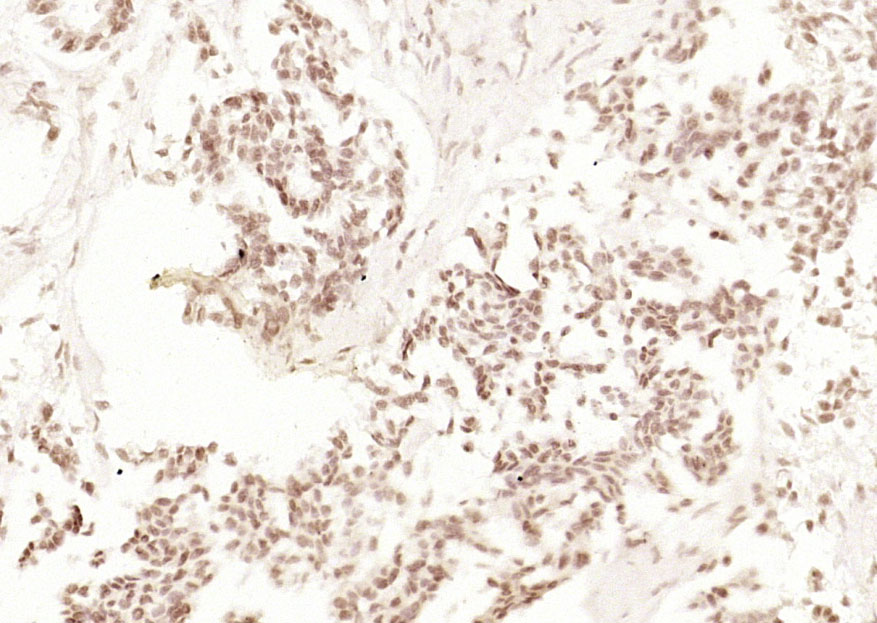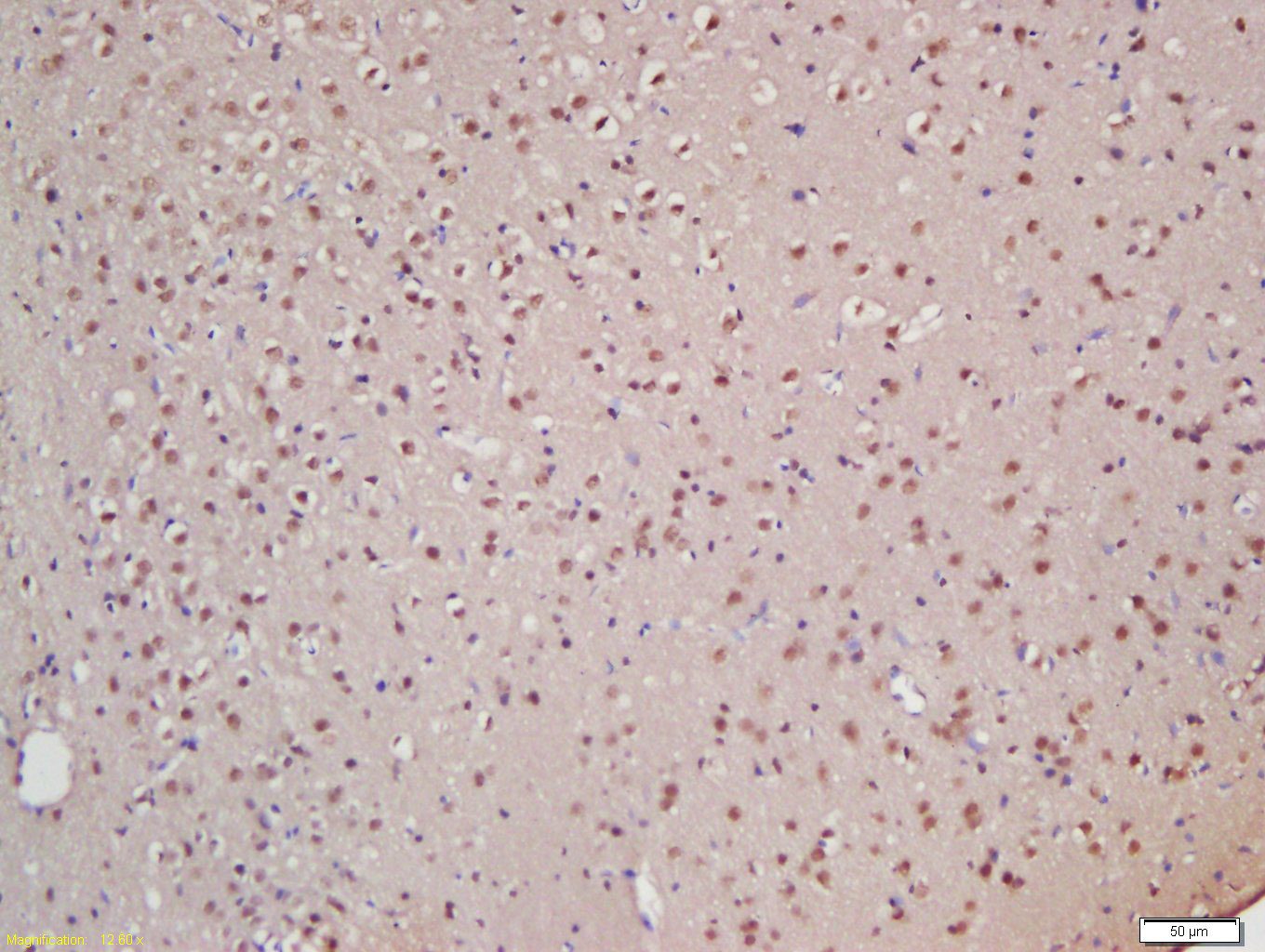
Rabbit Anti-XPB antibody
Basic transcription factor 2 89 kDa subunit; BTF 2; BTF2; BTF2 p89; DNA excision repair protein ERCC-3; DNA repair protein complementing XP-B cells; ERCC 3; ERCC3; ERCC3_HUMAN; Excision Repair Cross-complementing Rodent Repair deficiency complementation G
View History [Clear]
Details
Product Name XPB Chinese Name DNA损伤修复酶ERCC3蛋白抗体 Alias Basic transcription factor 2 89 kDa subunit; BTF 2; BTF2; BTF2 p89; DNA excision repair protein ERCC-3; DNA repair protein complementing XP-B cells; ERCC 3; ERCC3; ERCC3_HUMAN; Excision Repair Cross-complementing Rodent Repair deficiency complementation Group 3; GTF2H; RAD 25; RAD25; TFIIH 89 kDa subunit; TFIIH antibody TFIIH basal transcription factor complex 89 kDa subunit; TFIIH basal transcription factor complex helicase XPB subunit; TFIIH p89; Xeroderma pigmentosum group B-complementing protein. Research Area Tumour Cell biology immunology Chromatin and nuclear signals Epigenetics Immunogen Species Rabbit Clonality Polyclonal React Species Human, Rat, (predicted: Mouse, Chicken, Dog, Pig, Cow, Horse, Rabbit, ) Applications ELISA=1:5000-10000 IHC-P=1:100-500 IHC-F=1:100-500 IF=1:100-500 (Paraffin sections need antigen repair)
not yet tested in other applications.
optimal dilutions/concentrations should be determined by the end user.Theoretical molecular weight 89kDa Cellular localization The nucleus Form Liquid Concentration 1mg/ml immunogen KLH conjugated synthetic peptide derived from human XPB/ERCC3: 601-700/782 Lsotype IgG Purification affinity purified by Protein A Buffer Solution 0.01M TBS(pH7.4) with 1% BSA, 0.03% Proclin300 and 50% Glycerol. Storage Shipped at 4℃. Store at -20 °C for one year. Avoid repeated freeze/thaw cycles. Attention This product as supplied is intended for research use only, not for use in human, therapeutic or diagnostic applications. PubMed PubMed Product Detail Initiation of transcription from protein-coding genes in eukaryotes is a complex process that requires RNA polymerase II, as well as families of basal transcription factors. Binding of the factor TFIID (TBP) to the TATA box is believed to be the first step in the formation of a multiprotein complex containing several additional factors, including TFIIA, TFIIB, TFIIE, TFIIF and TFIIH. TFIIH (or BTF2) is a multisubunit transcription/DNA repair factor that possesses several enzymatic activities. The core of TFIIH is composed of 5 subunits, designated p89 (XPB or ERCC3), p62, p52, p44 and p34. Additional subunits of the TFIIH complex are p80 (XPD or ERCC2) and the ternary kinase complex composed of Cdk7, cyclin H and MAT1. Both p89 and p80 have ATP-dependent helicase activity. The p62, p52 and p44 subunits have been shown to be involved in nucleotide excision repair.
Function:
ATP-dependent 3'-5' DNA helicase, component of the core-TFIIH basal transcription factor, involved in nucleotide excision repair (NER) of DNA and, when complexed to CAK, in RNA transcription by RNA polymerase II. Acts by opening DNA either around the RNA transcription start site or the DNA damage.
DISEASE:
Defects in ERCC3 are the cause of xeroderma pigmentosum complementation group B (XP-B) [MIM:610651]; also known as xeroderma pigmentosum II (XP2) or XP group B (XPB) or xeroderma pigmentosum group B combined with Cockayne syndrome (XP-B/CS). Xeroderma pigmentosum is an autosomal recessive pigmentary skin disorder characterized by solar hypersensitivity of the skin, high predisposition for developing cancers on areas exposed to sunlight and, in some cases, neurological abnormalities. Some XP-B patients present features of Cockayne syndrome, including dwarfism, sensorineural deafness, microcephaly, mental retardation, pigmentary retinopathy, ataxia, decreased nerve conduction velocities.
Defects in ERCC3 are a cause of trichothiodystrophy photosensitive (TTDP) [MIM:601675]. TTDP is an autosomal recessive disease characterized by sulfur-deficient brittle hair and nails, ichthyosis, mental retardation, impaired sexual development, abnormal facies and cutaneous photosensitivity correlated with a nucleotide excision repair (NER) defect. Neonates with trichothiodystrophy and ichthyosis are usually born with a collodion membrane. The severity of the ichthyosis after the membrane is shed is variable, ranging from a mild to severe lamellar ichthyotic phenotype. There are no reports of skin cancer associated with TTDP.
Similarity:
Belongs to the helicase family. RAD25/XPB subfamily.
Contains 1 helicase ATP-binding domain.
Contains 1 helicase C-terminal domain.
SWISS:
P19447
Gene ID:
2071
Database links:Entrez Gene: 2071 Human
Entrez Gene: 13872 Mouse
Entrez Gene: 324323 Zebrafish
Omim: 133510 Human
SwissProt: P19447 Human
SwissProt: P49135 Mouse
SwissProt: Q7ZVV1 Zebrafish
Unigene: 469872 Human
Unigene: 282335 Mouse
Unigene: 44012 Rat
Unigene: 6574 Zebrafish
Product Picture
Antigen retrieval: citrate buffer ( 0.01M, pH 6.0 ), Boiling bathing for 15min; Block endogenous peroxidase by 3% Hydrogen peroxide for 30min; Blocking buffer (normal goat serum,C-0005) at 37℃ for 20 min;
Incubation: Anti-XPB Polyclonal Antibody, Unconjugated(SL4260R) 1:200, overnight at 4°C, followed by conjugation to the secondary antibody(SP-0023) and DAB(C-0010) staining
References (0)
No References
Bought notes(bought amounts latest0)
No one bought this product
User Comment(Total0User Comment Num)
- No comment




 +86 571 56623320
+86 571 56623320
 +86 18668110335
+86 18668110335

